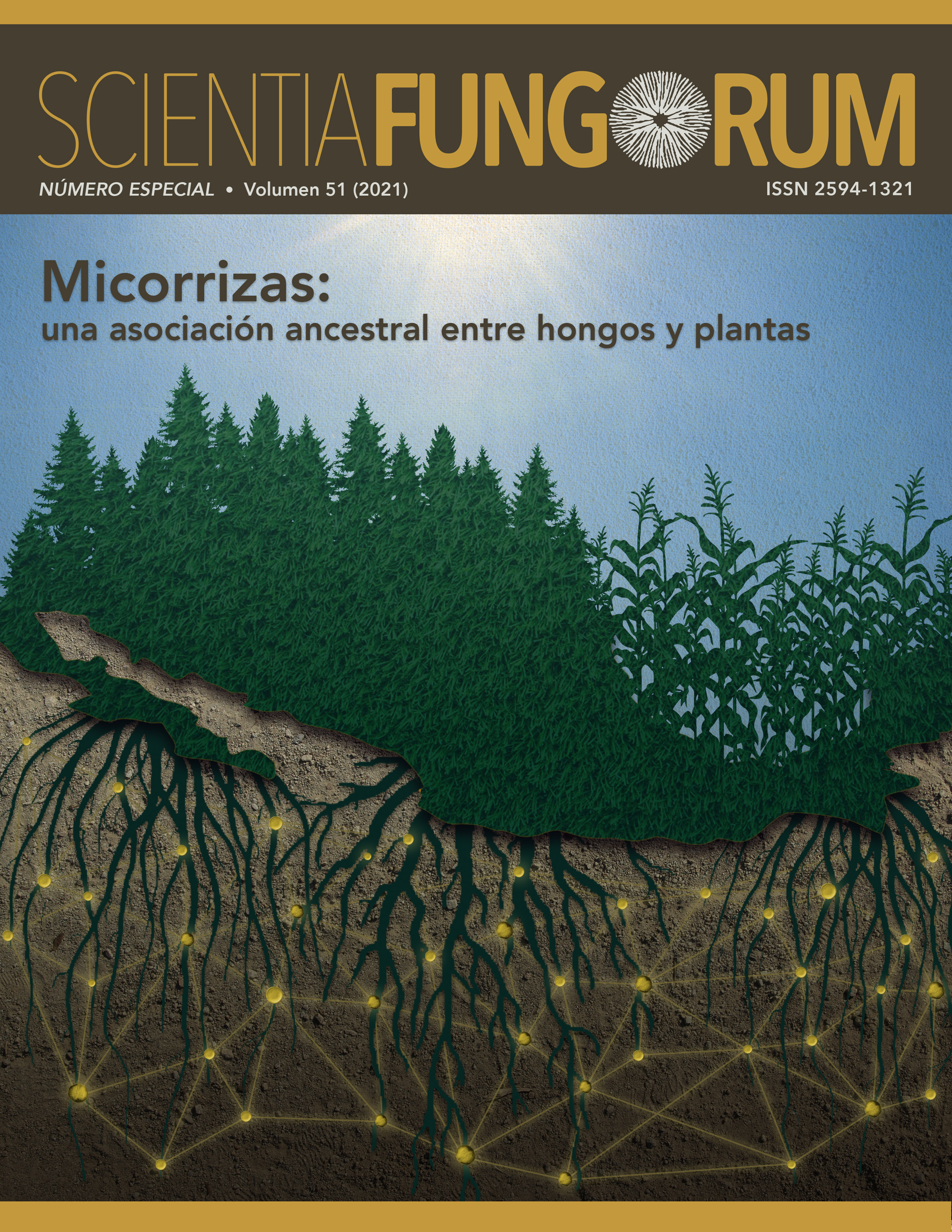Relationship between root traits and arbuscular mycorrhizal fungi in three species of weeds with different synanthropy index
DOI :
https://doi.org/10.33885/sf.2021.51.1360Résumé
Background: Nutrient foraging strategies between thin and thick roots, including mycorrhizal symbionts are resource-costly, and therefore a trade-off could exist. These strategies can vary with the synanthropy index (degree to which a species associates with anthropogenic habitats), thus maximizing the benefits for the acquisition of soil resources.
Objectives: To quantify the arbuscular mycorrhizal colonization of Melampodium species with different synanthropy index, and to determine the correlations between arbuscular mycorrhizal colonization and the architectural and morphological root traits.
Methods: Roots of Melampodium divaricatum, M. perfoliatum and M. tepicense, with highest to lowest synanthropy index, respectively were collected. The root branching rate (RBR), total root length (TRL), diameter of first-order root, (FOR), root tissue density (RTD), specific root length (SRL), and arbuscular mycorrhizal colonization were quantified. Additionally, soil chemistry analyses were done.
Results and conclusion: Melampodium tepicense had lowest FOR, highest SRL and lowest arbuscular mycorrhizal colonization, whereas M. divaricatum and M. perfoliatum had the opposite values. Additionally, M. divaricatum and M. perfoliatum had higher TRL, RTD, and RBR, suggesting that both strategies, arbuscular mycorrhiza and fine roots, are used for acquisition of nutrients, independently of their phylogenetic relationship and soil nutrients.
Téléchargements
Téléchargements
Publiée
Comment citer
Numéro
Rubrique
Licence
Aviso de derechos de autor/a
Política de acceso abierto
Los autores/as que publiquen en esta revista aceptan las siguientes condiciones:
De acuerdo con la legislación de derechos de autor, Scientia Fungorum reconoce y respeta el derecho moral de los autores, así como la titularidad del derecho patrimonial, el cual será cedido a la revista para su difusión en acceso abierto. Scientia Fungorum no realiza cargos a los autores por enviar y procesar artículos para su publicación.
Todos los textos publicados por Scientia Fungorum –sin excepción– se distribuyen amparados bajo la licencia Creative Commons 4.0 Atribución-No Comercial (CC BY-NC-SA 4.0 Internacional), que permite a terceros utilizar lo publicado siempre que mencionen la autoría del trabajo y a la primera publicación en esta revista.
Los autores/as pueden realizar otros acuerdos contractuales independientes y adicionales para la distribución no exclusiva de la versión del artículo publicado en Scientia Fungorum (por ejemplo incluirlo en un repositorio institucional o publicarlo en un libro) siempre que indiquen claramente que el trabajo se publicó por primera vez en Scientia Fungorum.
Para todo lo anterior, el o los autor(es) deben remitir el formato de Carta-Cesión de la Propiedad de los Derechos de la primera publicación debidamente requisitado y firmado por el autor(es). Este formato se enviará como un archivo complementario en el momento de someter a evaluación el trabajo.
Este obra está bajo una licencia de Creative Commons Reconocimiento-No Comercial 4.0 Internacional.



